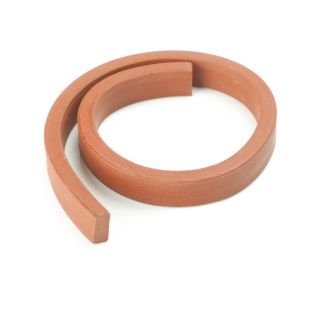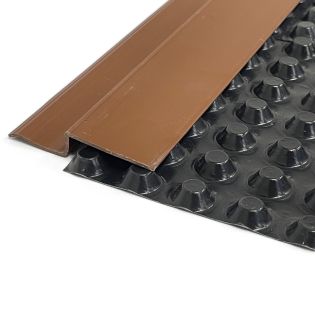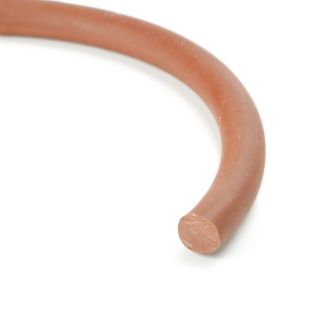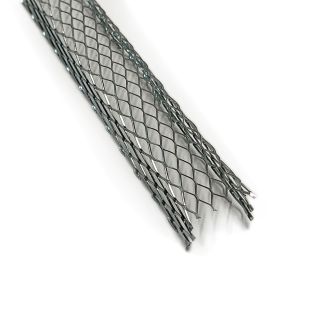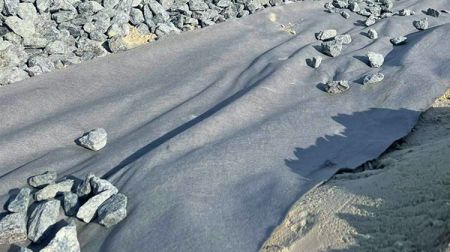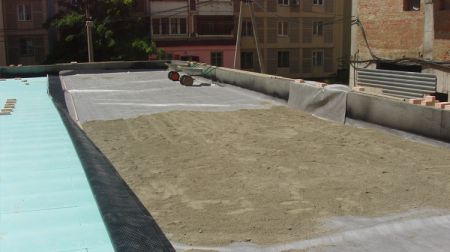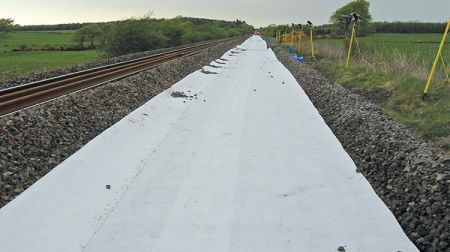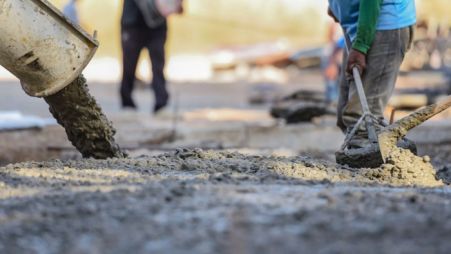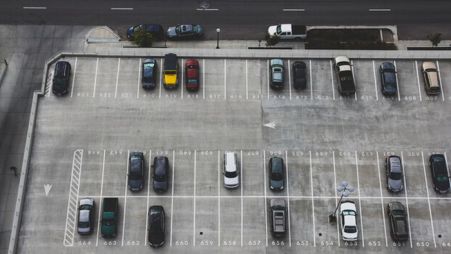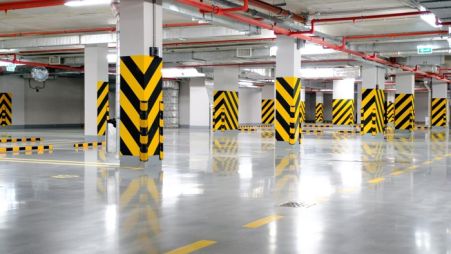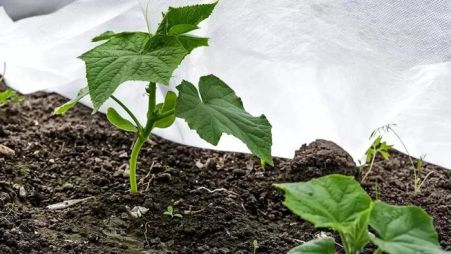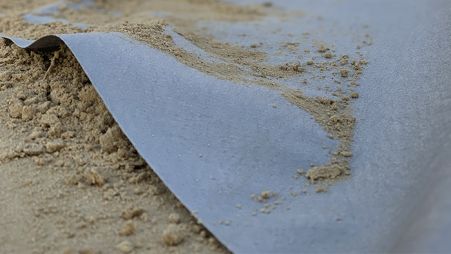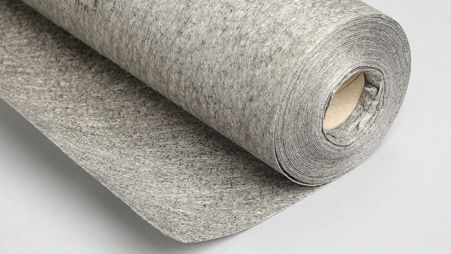Product code: 100005944
Manufacturer's article: 0000o4317
Needle-punched geotextile density 250 g/sq.m, roll 120 sq.m, 2x60 m Sanpol
Needle—punched geotextile is a non-woven fabric made of synthetic fibers bonded together mechanically. Needle-punched geotextile has a greater elongation in comparison with heat-treated types of geotextile, as well as high resistance to damage. Needle-punched geotextile has a large elongation coefficient, easily takes the necessary shape and has excellent filtering abilities in the longitudinal and transverse direction, withstands operational loads, retains filtration qualities.
Application:Landscape design - for separating layers of soil-sand-crushed stone and protection from unwanted growth of roots and weeds
- Construction of hydraulic structures - protection of waterproofing membranes from mechanical damage
- Road construction - reinforcement of the roadbed and slopes near the road
- Drainage systems – to protect the foundation during construction and to remove excess moisture
- Construction of tunnels, railways, overpasses
- Laying paving slabs
Geotextile is a universal material, the use of which has become possible in many areas due to its strength characteristics, increased wear resistance and good tear and tensile strength. Practical material reduces the cost of construction and prolongs the service life of structures. Geotextile has become indispensable in agriculture and horticulture, it is impossible to do without it in the construction of roads and railways, tunnels, hydraulic structures, sidewalks, when installing drainage systems, when laying underground utilities.
The choice of geotextile according to its method of manufacture and density depends on the intended type of work carried out and the technical requirements for this type of geotextile. The higher the load on the coating, the higher the density of the geotextile.
- Density 100-150g/m2 – for the arrangement of lawns, decorative reservoirs, for the separation of layers of soil-crushed stone-screening-sand, drainage systems, blind area, inversion roof (protective geomembrane), garden paths, sports fields with artificial turf, sports fields with natural grass, slopes.
- Density 180-200 g /m2 – in the construction of foundations, sidewalks, artificial reservoirs, for the protection of waterproofing membranes, in the organization of drainage systems, as a separating layer of soil-crushed stone-sediment-sand, road works, parking lots, roadbed, slopes, shelter thermophilic plants.
- Density 250g/m2 – construction of the foundation of the building, paving paving slabs, construction of parking, construction of roads for cars, to strengthen the slope, hydraulic works, artificial reservoirs, reservoirs, drainage.
- Density 300g/m2 – in the construction of highways, highways, roads for freight and technological transport, parking lots with heavy machinery, general-purpose roads, as a reinforcing layer when strengthening embankments and slopes, as a protective layer when laying geomembranes, PVC membranes, geogrids.
The main advantages of geotextiles are: ease of installation, environmental friendliness, affordable cost, strength, versatility, durability.
Roll width - 2 mNamotuvannya - 100 p.m
What is the density of needle punched geotextile?
Geotextile is made in the form of rolls, with a width of 2 to 6 m and a length of 50 to 150 m. The density can vary from 100 to 600 g/m2 in increments of 50 grams. The most popular density in the construction industry is 150-200 g/m2.
How to lay geotextiles correctly?
Geotextile can be rolled out manually or with the help of special equipment, It depends on the width of the roll. Make sure that the laying takes place in an even layer without folds and twisting. Before laying the geotextile, it is necessary to carefully remove the rhizomes, stones and other debris, prepare the soil base, level the plot. When using several rolls, the geotextile is laid overlapping with the overlap of the adjacent canvas by 10-30 cm. This will help to avoid mixing of layers and displacement when filling bulk materials.
Which geotextile is better: white or black?
Выбор между белым и черным геотекстилем зависит от конкретных условий и предпочтений.
- Черный геотекстиль обычно используется для создания более эстетичных ландшафтов и ассимиляции с окружающей средой. Он также поглощает солнечный свет, что может помочь ускорить процесс нагревания почвы в холодные месяцы.
- Белый геотекстиль, с другой стороны, отражает солнечный свет и может помочь сохранить прохладу в зоне его применения.
How long does geotextile last?
The service life of geotextiles depends on the quality of the material, operating conditions and intensity of use. On average, well-installed, high-quality geotextiles can last from 5 to 20 years. However, in some cases, the service life can be longer, especially if the geotextile is used in low-intensity conditions and is maintained properly.
What is the difference between geotextiles and spunbond?
Although geotextiles and spunbond (agrofabric) are both used to protect soil from weeds, they have significant differences in composition and functionality. Geotextiles are usually made from polypropylene or polyethylene and are designed for long-term use under load. Spunbond, on the other hand, is usually made of polypropylene and has a lighter structure, intended mainly for temporary protection of plants from weeds.
Purchasing high-quality geotextiles for your project is easy and convenient in the Budlea online store. We offer a wide range of high quality geotextiles at competitive prices to help you achieve success in your construction or landscaping project.
How to replace geotextiles against weeds?
In case you are looking for an alternative to geotextiles for weed control, one option may be to use mulch. Mulch also helps suppress weed growth, retains soil moisture and prevents soil erosion. Additionally, natural materials such as straw or sawdust can be used as an environmentally friendlier alternative to geotextiles.
What do you put under geotextiles?
Gravel or crushed stone is often placed under geotextiles. This helps create additional drainage and provide a more stable base for the geotextile. In addition, special impregnations or preparations can also be applied to the soil to prevent weed germination.
Which is the best geotextile to buy?
When choosing geotextiles, you should pay attention to its density, strength, permeability and resistance to environmental influences. The best choice depends on the specific conditions and requirements of your project. It is recommended to consult with professionals or construction experts to select the most suitable option.
Do I need to put geotextiles at the bottom of the bed?
Placing geotextiles at the bottom of the bed can be beneficial in preventing weed growth and retaining soil moisture. However, this depends on the specific conditions and requirements of your gardening project. Before making a decision, it is recommended to conduct a soil analysis and consult with experienced gardeners or agronomists.




